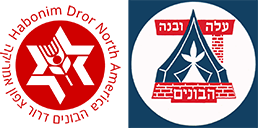BUILDING PROGRESSIVE ZI.ONIST ACTIVISTS
Exploring the Impact of Habonim Dror
A Study by Steven M. Cohen & Steven Fink, 2013
Conclusion
The findings testify clearly to the impact of Habonim Dror upon the movement’s alumni, be they in the United States, Israel, or elsewhere. The respondents in this sample of nearly 2,000 “Habos” make very powerful claims to the impact of Habonim Dror upon their lives. With over 40,000 alumni, there is no way to know the extent to which our sample is truly representative, or the extent to which it over-represents the still-connected and therefore the most-influenced.
That said, this sample does contain credible evidence of impact in at least four areas:
- The acquisition of very strong levels of Israel engagement, resulting in aliyah for over one –in-five, albeit with a return of nearly half the olim. Including the olim, 85% of respondents have visited two times or more and 67% have been in Israel for periods of five months or longer, both numbers well above the New York camper sub-segment. In addition, 89% of the survey participants say that they are very or somewhat attached to Israel.
- The formation of very progressive political values in the American context.
- The crystallization of strong dovish views and identities with respect to Israel and its conflict with the Palestinians.
- The formation of strong family ties and traditions centered around Habonim Dror, as well as life-long friendships based upon Habonim Dror experiences.
That we found mixed effects, at best, in the Jewish engagement area testifies to the credibility of the four major findings enumerated above. That is, the high levels of Jewish engagement today are in good measure the result of the types of parents and Jewish education that promoted participation in Habonim Dror, as well as the “standard” impact of attending any Jewish camp.
However, the special contribution of Habonim Dror in the areas of aliyah (particularly to both rural and urban kibbutzim), ties to Israel, progressive politics in the US and Israeli context, and strong Habonim-centered family ties all emerge quite forcefully in these data. These distinctive outcomes are entirely consistent with the decades-long educational philosophy and objectives of this progressive Zionist youth movement. They speak not merely to the effectiveness of Habonim Dror alone, but sometimes in combination with other forms of Jewish values education in the United States, in encouraging current and future generations to continue their Jewish identity though Jewish day schools, Israel engagement, political activism, and/or Jewish organizations/movements.
